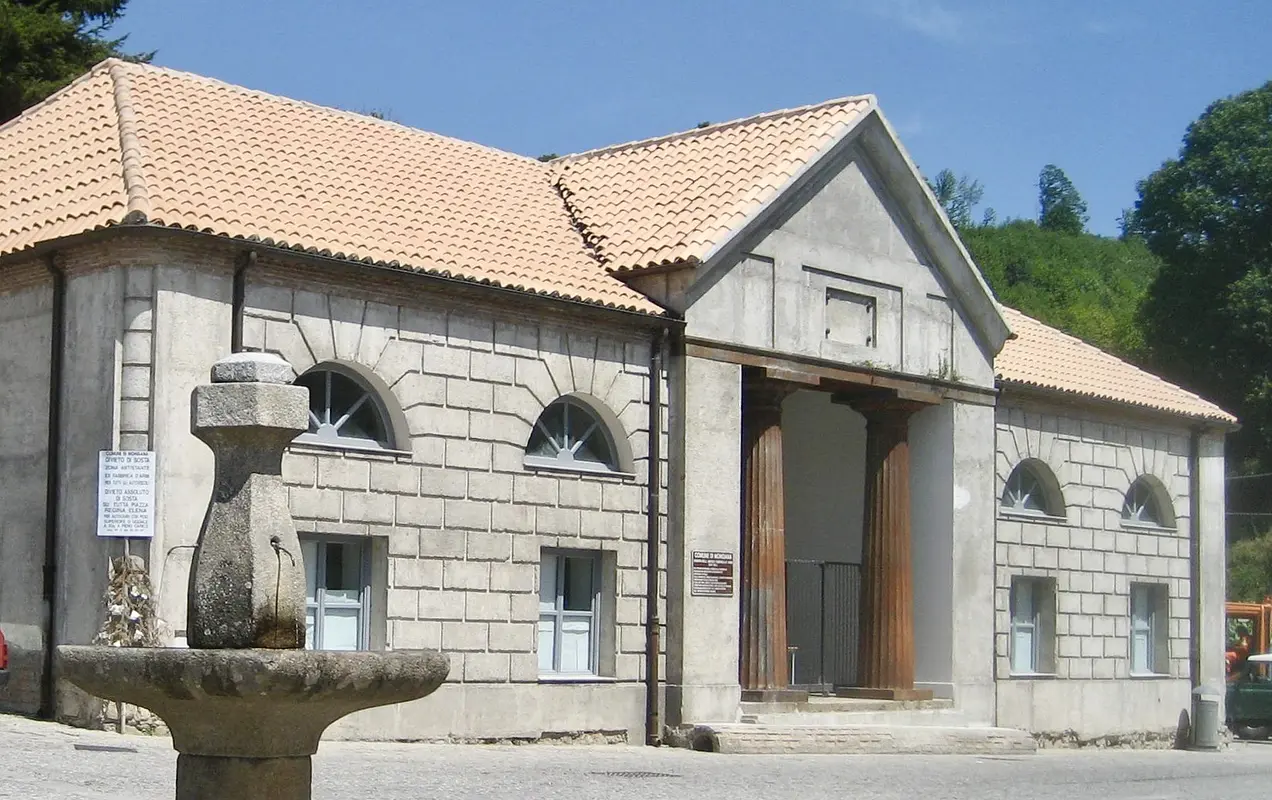





The Weapons Factory of Mongiana
A neoclassical facade introduces the museum, which is the flagship institution of the Ironworks and Foundries of Calabria Ecomuseum


Where

An exemplary manufacturing complex
The Arms Factory, inaugurated in 1852 in the context of the Mongiana steel hub, was home to the production of both sidearms, such as sabers and bayonets, and portable firearms, especially rifles, destined for the army of the Kingdom of the Two Sicilies. The workshop was designed by the Neapolitan engineer and architect Domenico Fortunato Savino, the true deus ex machina of the industrial complex, who wanted to make it a symbol not only of excellence but also of the refinement of the products that came out of it. Today the factory has regained its relevance as the home of MUFAR, Museum of the Arms Factory, as part of theEcomuseum of the Ironworks and Foundries of Calabria.
A vision of a temple of steelmaking
The main body of the factory is distinctively presented right from the façade of neoclassical forms, punctuated by two Doric order columns almost five meters high, striking because they are the result of a single cast iron casting. Clear, the designer's intent to impress the visitor with an 'unusual application of iron in construction confirming the cutting-edge technologies that found application in those workshops. Crossing the threshold, more cast-iron columns form a colonnaded atrium that reinforces the idea of a true temple of the iron and steel industry, representative of an industrial complex that in fact in the first half of the 19th century was of absolute excellence.
The masterpiece of the Mongiana gunmakers.
At full capacity, daily production would amount to twelve "complete assortments," referring to the prescribed equipment of an infantryman: rifle, bayonet, accessories, saber and dagger. Of particular note was the production of rifles, with special reference to the so-called Mongiana Model, a weapon with innovative features that for a few decades would represent the non plus ultra in its category. The museum preserves some examples of it that look as if they have just come out of the workshop. A rifle, which also for its elegance of lines and finish has become a coveted collector's item.
A factory at the forefront in every field
The factory turns out to consist of three buildings: the first with the forges for the hot machining of barrels and bayonets; the second with the grinding wheels for finishing swords and barrels; and the third with the housing of the military custodial staff, but also with a room intended as a school for the children of the 200 skilled workers in the workshops.
Enter the Map of Italy's Undiscovered Wonders and find treasures where you least expect it... Inspire, Recommend, Share...
The Map thanks:
PSC 2014-2020 del Ministero del turismo - Avviso “Montagna Italia” - Progetto le Montagne del sole - Codice CUP J38J22000450008


